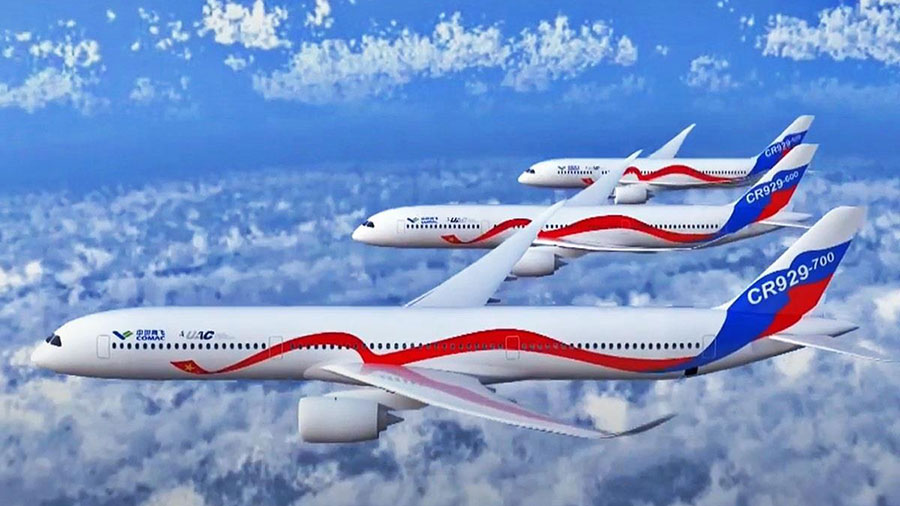Iran To Form Aircraft Maintenance Consortium With China, India & Russia

The Chinese and Russian jointly developed CR929 passenger jet
Mohammad Mohammadi Bakhsh, the Head of the Civil Aviation Organization of Iran (CAO) has announced that four countries have been sending their commercial passenger planes to the Iran for repairs and maintenance and that it will form a consortium with India, China, and Russia to set necessary standards for aircraft repair services.
Iran has repaired six foreign aircraft and several airplane engines this year and has achieved the required level of airworthiness. Iran is also planning to build three types of jet aircraft in the 50, 72 and 150 seat capacity passenger planes. Russia is also in a partnership with the nearby UAE to develop a new generation of supersonic aircraft.
Aircraft maintenance has become an issue due to the West’s sanctions, which prevent replacement parts and maintenance equipment being sent to both Russia and Iran. However, both China and Russia have well-established aviation manufacturing industries; both have been developing their own domestic aircraft for decades, while India has a significant role in the global aviation parts industry.
All these countries possess significant Airbus and Boeing fleets, but will now be opting to install parts and conduct maintenance without the support of the original manufacturers – a blow to the aviation supply chain industry in the United States and Europe. These will talk up issues concerning safety, yet China and India already supply parts to both manufacturers. China especially will be highly diligent in its approach to parts, as a one-party state it cannot afford to have its citizens exposed to airworthiness problems – prior to covid Chinese airlines carried 585 million passengers. Asia carried more passengers (35%) in that year than any other region, including Europe (27%) and North America (22%). Currently, air traffic post-covid is at about 65% of 2019 levels.
The decision to form an aircraft repair and maintenance consortium between China, India, Iran, and Russia will also surely lead in future to the development of an Asian-built passenger airliner to challenge, in time, the Wests dominance of the aviation industry and to provide alternatives as Western sanctions motivate them to do so.
This is already occurring. To reduce their reliance on Western systems, China and Russia are improving their indigenous technologies: Russia is hoping to carry out the first test flight for the in-development high-thrust Aviadvigatel PD-35 engine later this year, while China is working on its CJ-2000 turbofan, aimed at powering the CR929 passenger airliner that both are jointly working on. That could be in service by 2025-26.
Related Reading





